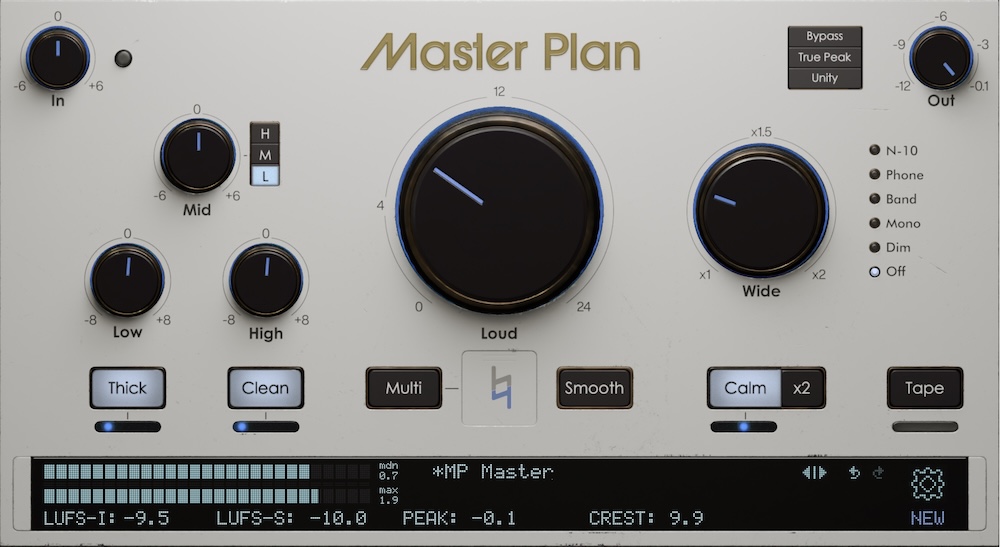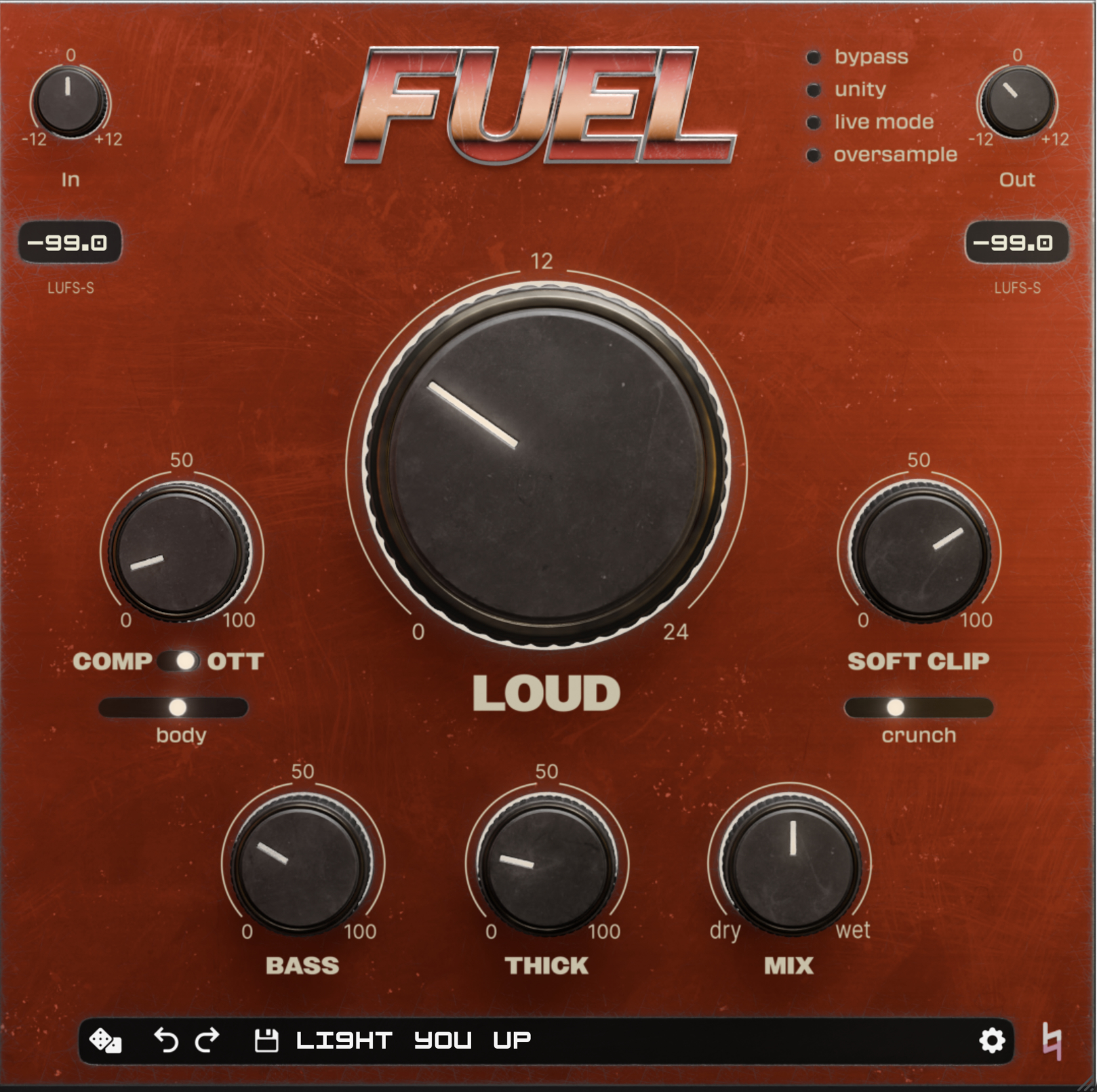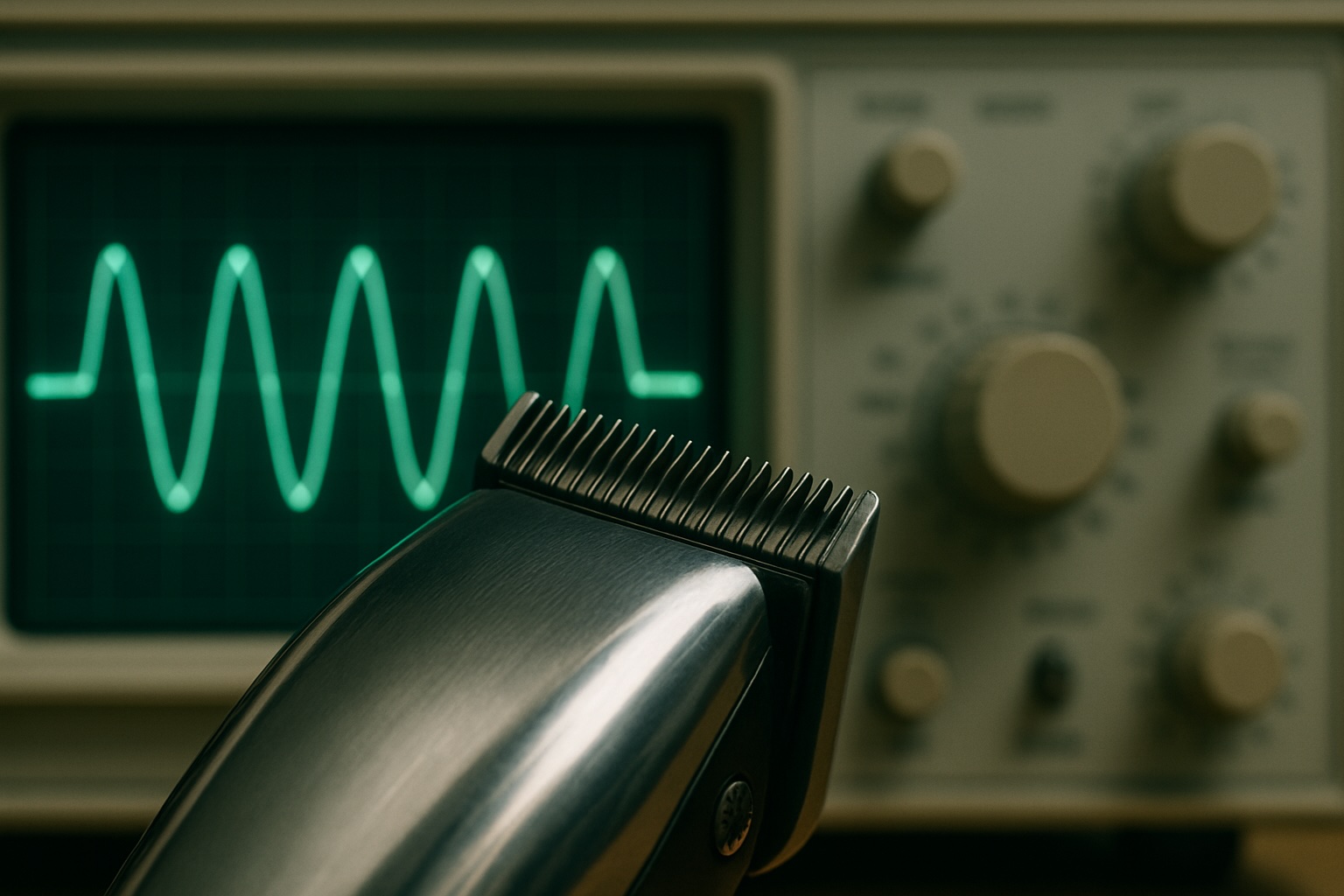Whether you're trying to control transient hits or increase loudness, clippers are an excellent tool for getting the job done. But how are they different than one another, and why might I use one or the other?
First, let's talk about signal basics: we have a bunch of samples over time, and each of those samples must stay between -1 and 1 by the time we stamp a final track. The job of the clipper is to shape the wave in a predictable way, keeping the signal in that range.
A hard clipper works by keeping most values exactly the same, except for values above 1 and below -1. For values above 1, it sets them to exactly 1, and for values below -1, it sets them to exactly -1. This snips the tip off the waveform and creates a sharp edge followed by a flat line where the signal is not moving at all.
A soft clipper (like the one in FUEL) gradually reduces the amplitude of samples as they approach 1 or -1. Instead of a hard edge at 1 and -1, the signal slowly flattens out, but the way it approaches a flat line differs a lot from clipper to clipper, and the math the each soft cilpper uses is what gives each one its characteristic sound.
Let's put a soft and hard clipper into a simple animation:
Ok cool! But what does this mean for the sound?
A hard clipper creates sharp edges in a waveform occasionally. Sharp corners create a lot of distortion in a very short period of time, and there are a lot of ways to think about that. It means a lot of harmonics, a lot of noise, a burst of energy... all of these things happen when the sound goes across 1 or -1. And, after that point, all details in the waveform are lost, because it becomes totally flat, until it gets pulled back over the line. Another way of thinking about this is that everything sounds perfect right up to the line, and all the distortion is released in a very short period of time.
This makes a hard clipper good for taming transients - up to a certain point, it tends to emphasize them and and make them pop, while keeping them in range so that you can mix the sound more creatively and at higher levels. However, taking it too far can make them sound overly bright, and pushing extremely hard will cause other more detailed sounds to fart, pop, and crumble.
A soft cilpper distributes distortion over a wide range of amplitudes levels. This means that a much larger range of the waveform will be distorted. You can see the blue soft clip line diverge from the raw signal much sooner than the red hard clip line! Another way of thinking about this is that there's distortion all over the waveform, but it's a lot quieter and less invasive. So, a soft clipper will help you mix a sound at higher levels, but it will also add its own saturation character to the whole sound, not just at the points where it goes too far.
This makes a soft clipper good for adding saturation and character, giving bass new timbre and adding thickness anything you throw at it. It will also retain more detail in loud material because it doesn't turn into a flat line as quickly (or for some soft clippers, at all), so it's better for increasing volume in sounds where the loudest parts are not transients, but sustained sounds, like basses, brass, heavily compressed material, etc. However, taking it too far will muddy up, and eventually crumble the sound.
For more on this topic: I had a great conversation with Kyle of Audio University about the ins and outs of clippers on his channel, and we went over some examples that show how Master Plan is different from either a soft or hard clipper. Check it out!









